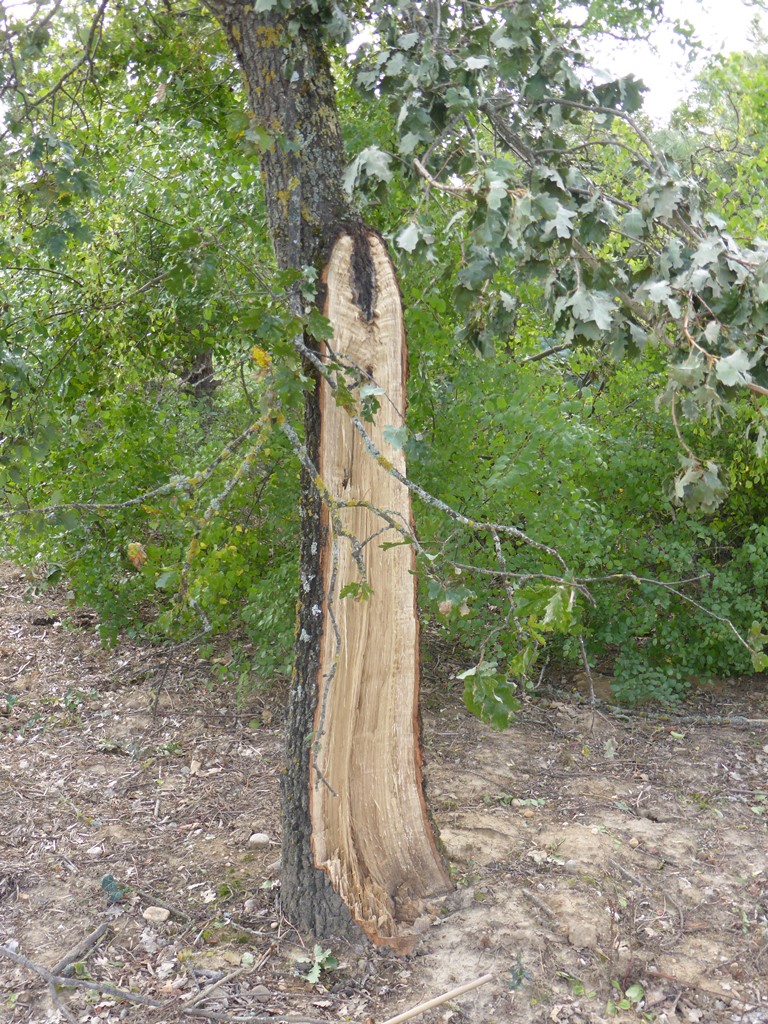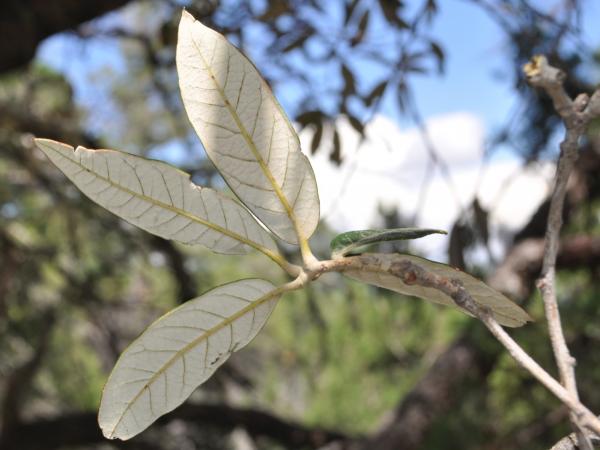Editor's Picks
Plant Focus
Windstorm at Arboretum de la Bergerette
 |
| Tornado approaching Montauban, August 31, 2015. |
In 2009 the infamous Hurricane Klaus transited southwest France, and after laying low countless trees in the pine plantations of Les Landes, southeast of Bordeaux, it proceeded to do the same at Arboretum de La Bergerette, near the city of Montauban. With the help of a 26-ton digger, a German team rustled up at short notice by Anke Mattern, and over 1 kilometre of 12 mm (1/2 inch) steel cable, many of the Arboretum’s trees were re-erected, and those who visited after the 2012 Bordeaux Conference may remember weaving their way through a cat’s cradle of cabling.
Six years later, on August 31, 2015, an extraordinary storm system originated in Spain, moving north and intensifying to reach a maximum in the area of Montauban (see photo). My anemometer was known to under-read, but had recorded 60 mph (100 kph) by the time a tree leaned on it and stopped its rotation. Speeds of up to 95 mph (152 kph) were recorded in the area. The wind turned as it passed, so trees were felled in diametrically opposed directions.
The 2009 event followed hard on the heels of a week of heavy rain, so the majority of the trees then damaged were simply blown over; occurring in winter, leafless deciduous trees largely escaped injury. However, at the
 |
| Wind-felled pine at Arboretum La Bergerette, despite the steel cable used to re-erect it after Hurricane Klaus. |
onset of the recent event the soil was dry, and of course everything was in full leaf, so damage was not limited to evergreens, and had a greater proportion of breakage rather than windthrow. Although once again pines seemed to take the brunt of the damage, some of the iconic roadside Platanus in the area had their trunks snapped in half. Several of the Arboretum’s pines were smashed, others blown over (including a favourite, a large Pinus coulteri); amongst a few examples of other genera the Taxodium took a beating, the largest Tetradium daniellii (a welcome umbrella of summer shade near the house) was completely wrecked, and a beautiful Arbutus andrachne, whose slow-grown trunk I had thought to be hard as steel, had its main trunk ripped off at the base.
But, much more pertinently, what of the oaks?
Native oaks first: young vigorous trees in exposed areas, some of which had been re-erected in 2009, this time remained upright in the dryer conditions. However, the wind probed every weakness, and the merest morsel of included bark was enough to split one young tree (see photo below, right). Those who visited in 2012 and dined
 |
 |
| Nature’s way of crown pruning (Q. pubescens) | Just a morsel of included bark (Q. pubescens) |
above the woodland behind the house profited from the shade of a venerable Quercus pubescens, probably the largest oak on the property. As with others in the wood, virtually every terminal branch was torn off this tree,
 |
| The ex-Tetradium |
and left to litter the ground underneath (see photo above, ‘Nature’s way of crown pruning’). Some mature trees fell; a few others lost major branches also.
Of the introduced oaks, the picture is somewhat brighter – most have escaped damage. A row of Q. rubra in a very exposed position lost a few branches, and two Q. aucheri, again exposed, both snapped off at the base – somewhat of a surprise as I would have considered these trees as real ‘toughies’. A Q. ellipsoidalis (if indeed, in the ebb and flow of the ‘Is there a Q. ellipsoidalis’ story, there is still such a thing!) lost the upper part of its crown. But when it comes to wind damage, the ‘usual suspect’ is always Q. nigra, and this case was no exception. Many major branches have broken off the larger specimen in the valley (except, needless to say, the one which intrudes on an adjacent Calocedrus). Every wind event sees this tree lose branches, but it grows so fast in its moist spot in the valley that damage is soon concealed.
 |
 |
| Just over 20 years ago these pines were seeds in pots in my nursery... | |
One must look to the future. That shelterbelt mainstay of coastal gardens, Pinus radiata, has not been windfirm here, leaving the western aspect of the Arboretum dangerously under-protected. This winter I will be planting as pine replacement therapy the offspring of a ‘superoak’ growing here, which was raised from seed collected by Guy Sternberg at the Texas A&M University from Q. graciliformis. My plant, which has grown consistently at over a metre (3 ft 3 ins) a year, is itself almost certainly a hybrid; furthermore, the offspring I have raised may well have been fathered by adjacent Q. coccinea, but if they retain even a proportion of the ‘superoak’ characteristics I will be content. Wish me luck!











